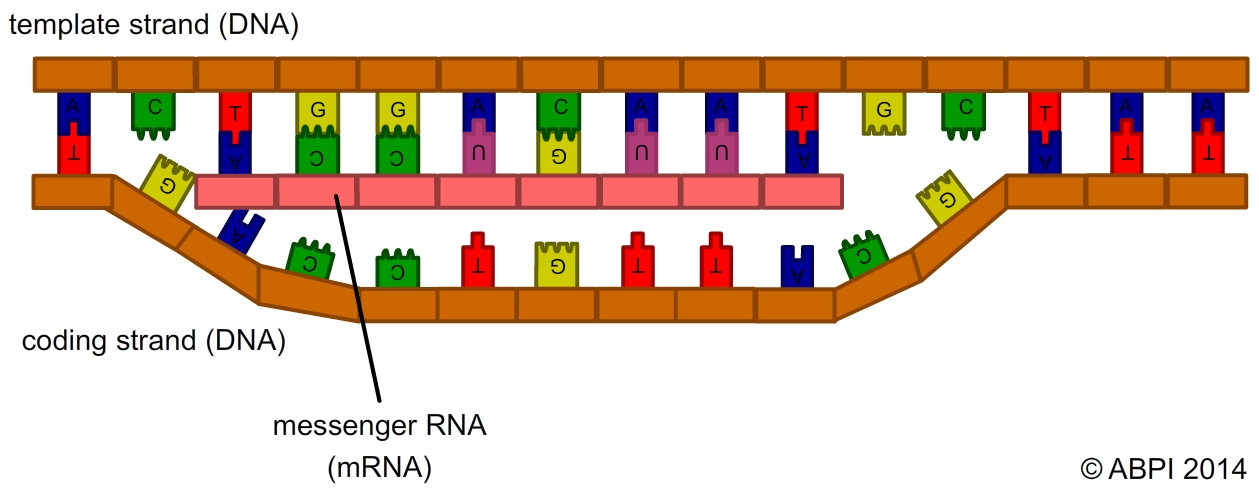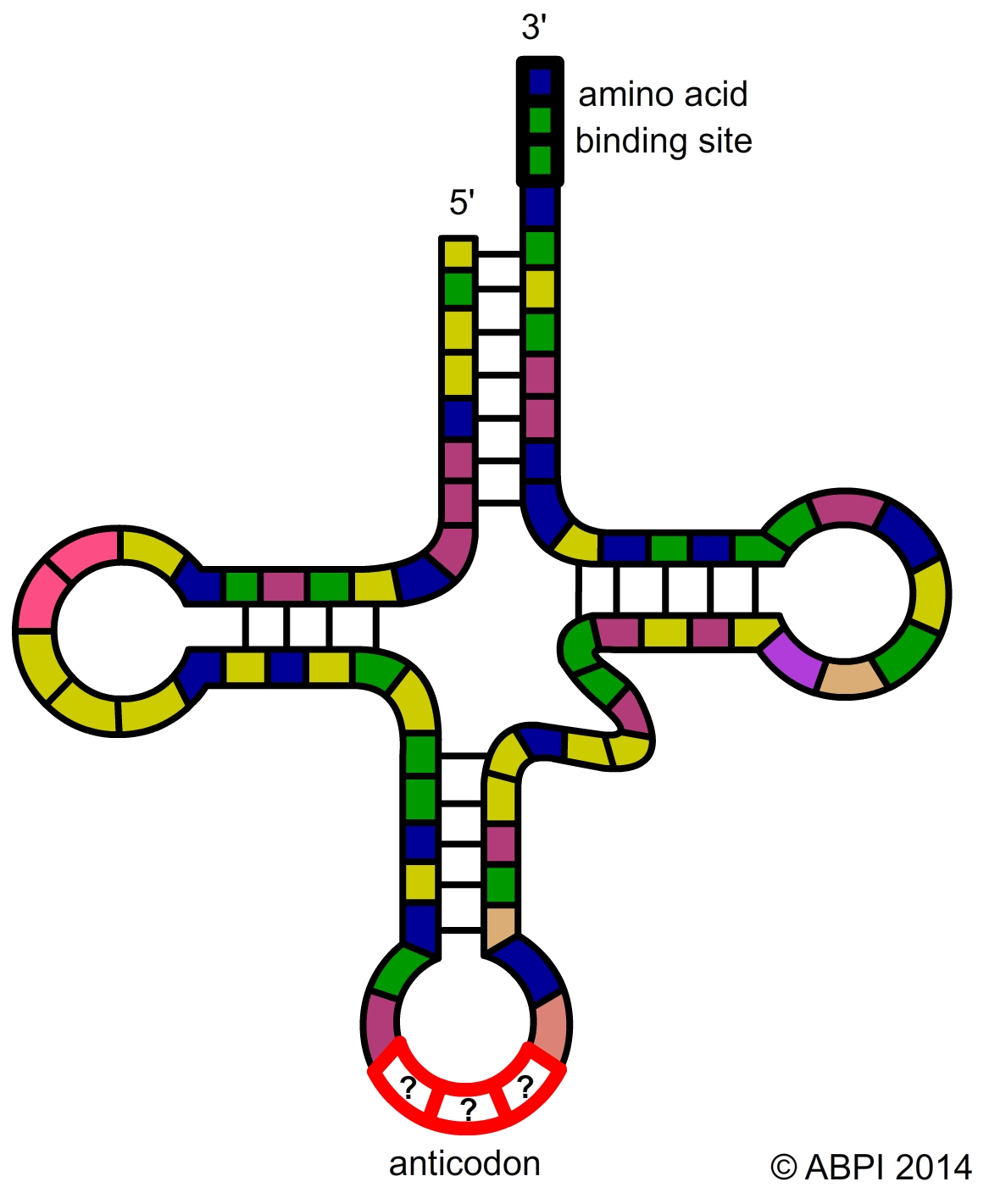This topic takes on average 75 minutes to read.
There are a number of interactive features in this resource:
 Chemistry
Chemistry
 Biology
Biology
Although RNA is a single stranded molecule it is found in three very different forms which enable it to carry out three very different functions.
The genetic code is held within the sequence of bases in the DNA double helix. It is based on codons – groups of three bases which code for an individual amino acid or for the beginning or ending of a transcription sequence when the genetic code is read. A section of DNA containing the codons for the amino acids which make a polypeptide chain is called a gene. However DNA is a very large molecule and it cannot get out of the nucleus of eukaryotic cells. Messenger RNA (mRNA) is the molecule which transcribes the DNA code and carries it out of the nucleus through the pores in the nuclear membrane into the cytoplasm of the cell. Here it lines up on the surface of a ribosome and directs the synthesis of a protein based on the original DNA code.

The 5’ strand of DNA acts as the template strand and is transcribed to give a single strand of mRNA. It is known as the antisense strand.
The 3’ strand of the DNA is the coding strand, known as the sense strand. The mRNA which is built up has the same base sequence as the 3’strand of DNA, with thymine replaced with uracil. The build up of the mRNA strand from the 5’ to the 3’ end is also catalysed by RNA polymerase.
Every strand of mRNA has an AUG start codon at the beginning and one of the three stop codons (UAA, UAC or UGA) at the end. When it becomes attached to a ribosome this is where the message starts and stops as the polypeptide chain builds up.

Transfer RNA (tRNA) is found in the cytoplasm of the cell. Each tRNA unit is folded to give three loops which look rather like a clover leaf. Each tRNA unit has two key binding sites:
The ribosomes are the site of protein synthesis in the cell. They are made up of 50-60% ribosomal RNA (rRNA), which is combined with proteins. There are two rRNA subunits, one of which is larger than the other. The large RNA subunit acts as an enzyme and catalyses the formation of peptide bonds between the amino acids brought to the ribosome on tRNA and lined up on the strand of mRNA.
The main type of ribosomes in eukaryotic cells are called 80S ribosomes (S stands for Svedberg, a unit used to measure the rate of sedimentation in a centrifuge). The large subunit is 60S and the smaller one is 40S and the ratio of rRNA:protein in these ribosomes is 1:1.
However, in prokaryotic cells, and in the mitochondria and chloroplasts of eukaryotic cells, we find 70S ribosomes. These have 50S and 30S subunits, and the ratio of rRNA:protein is around 2:1.

Make a poster presentation on one area of biochemistry. Work in groups and choose a page from this resource or another area of biochemistry that interests you. Make a poster and present it to your peers as you would at a poster session at a scientific conference.
